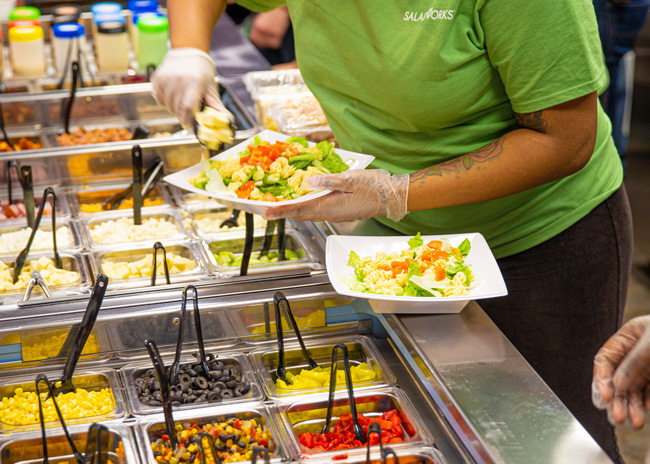foodlife, a single-unit, fast-casual concept of LEYE in Chicago’s Water Tower, does not have kiosks or tablets, but it has the same goal. It has a point-of-sale ordering system that relieves customers and chefs of handling cards or cash.
Kevin Trojanowski, partner at LEYE, explains the process:
A couple comes to foodlife and is greeted by a host, who seats them and hands them a card, explaining how to use it. A table is then reserved for them. The couple goes to any one of 14 stations — foodlife calls them kitchens — and selects what they want. The chef at that station takes the card, swipes it to start a bill and enters their selection, handing back the card. The chef then prepares the order, whether it is barbecue, salad, pasta, soup, or stir-fry.
The couple take their orders on china plates and return to their table, which is set with flatware. They go to other kitchens and repeat the process until their meal is complete. During this process, the chef has been able to concentrate on the food and on guest service. When they are finished, the couple takes their card to a cashier and pays the bill.
Remarkably, foodlife built this system 24 years ago. They have upgraded it over the years, but it is essentially the same process. It doesn’t require a lot of space in the front of the house, but there is a back room that has “quite a few computers and a heck of a network,” according to Trojanowski. The database manages incoming data for each card order and sends it to the cashiers to close the bill.
The POS systems are stationary, but employees do have handheld technology available. This is primarily used in busier times, like holidays, to collect payment if the cashier lines are too long. The biggest challenge is when the system goes down. Years ago, the system would automatically update itself and be down for 10 minutes or more. “Everything would freeze, and the question would become, do we send the guests away with free meals or keep them captive?” Trojanowski says. foodlife has resolved the issue by updating the software themselves every Wednesday morning to prevent any downtime.
We'll be featuring an in-depth look and case studies on customer-facing technology in the next issue of rd+d.




